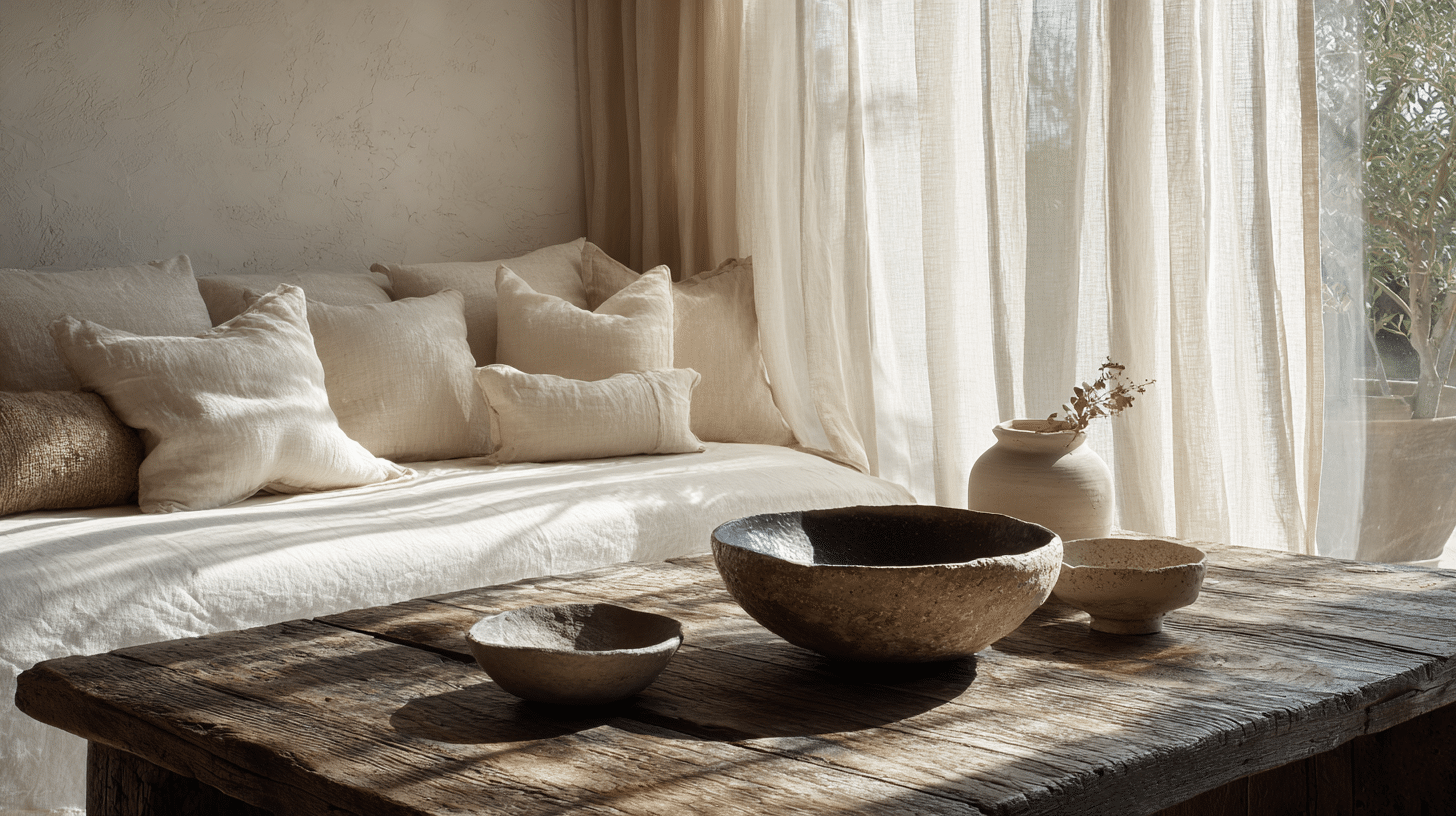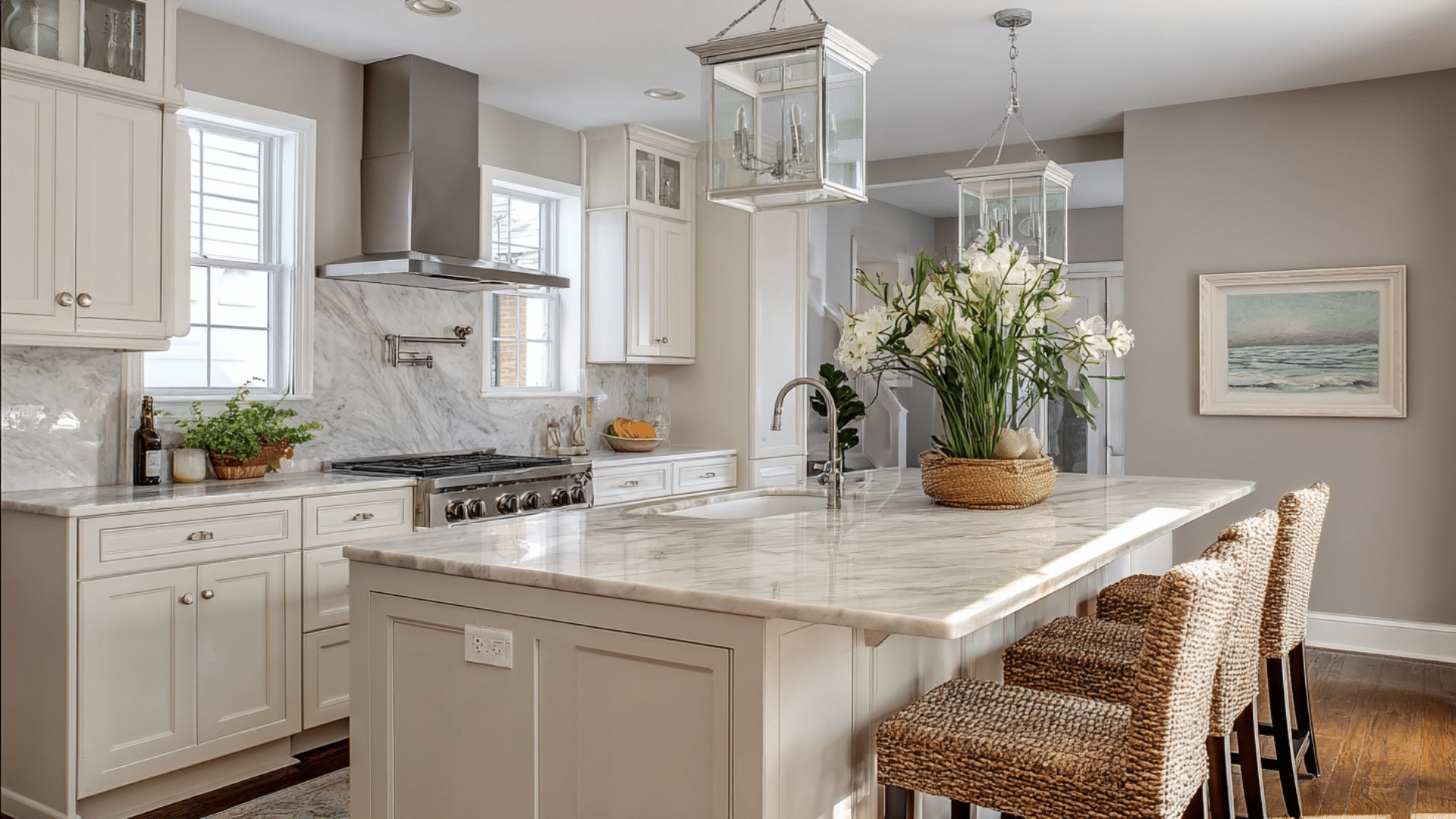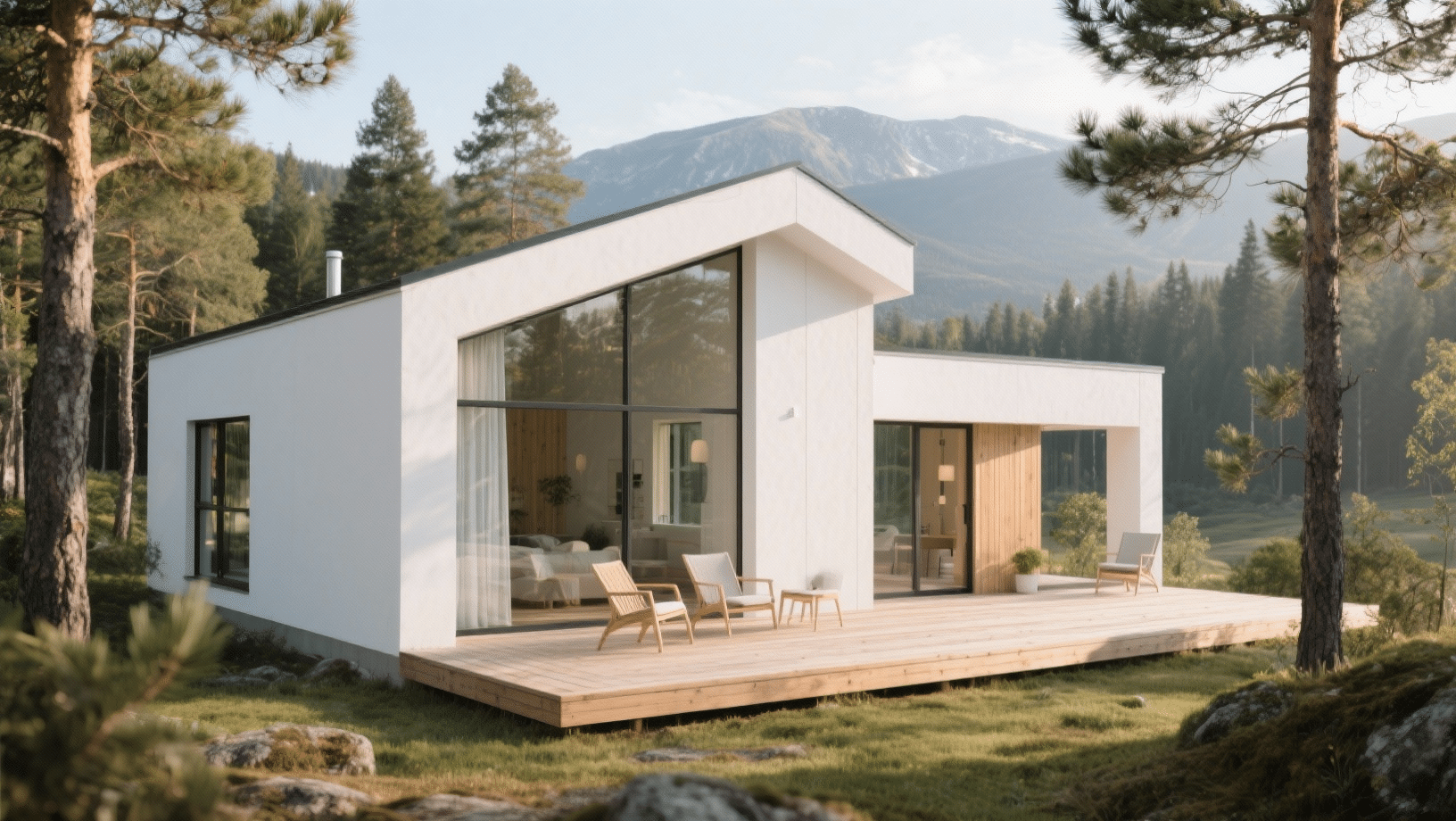Does your home feel too perfect or polished? While many aim for magazine-worthy spaces, they often feel cold and disconnected.
Wabi sabi interior design celebrates imperfection, bringing calm and soul to your spaces.
This ancient Japanese philosophy encourages you to appreciate cracked pottery, aged wood, and simple textures for a more peaceful, genuine home.
In this blog, you’ll learn about wabi sabi’s meaning and core principles. You’ll also find out how it differs from other design styles.
What Does Wabi Sabi in Interior Design Mean?
Wabi sabi is a Japanese concept that finds beauty in imperfection and impermanence.
It honors things that are old, worn, and simple. Imagine a weathered wooden table or a handmade ceramic bowl with subtle, irregular imperfections.
This design approach rejects the need for perfection. Instead, it invites natural aging and real materials.
Wabi-sabi helps you create a home that feels lived-in and real.
It reduces stress about keeping everything spotless. Your space becomes more comfortable and less about impressing others.
Core Principles
The key principles that make wabi sabi so special will help you bring this style into your own home.
- Embrace Imperfection: Celebrate cracks, dents, and uneven surfaces instead of hiding them. Flaws add character and tell stories.
- Find Beauty in Simplicity: Keep only what you need and love. Clear clutter and let each item have a purpose.
- Appreciate Natural Materials: Use wood, stone, clay, linen, and cotton. These materials age beautifully and develop character over time.
- Accept Impermanence: Honor natural aging. Faded paint, rusted metal, and worn fabric show the passage of time.
- Value Authenticity: Choose real materials over fake ones. Handmade items have more soul than mass-produced pieces.
- Create Asymmetry: Avoid perfect balance and matching sets. Mix different textures and shapes for a natural, relaxed feel.
- Use Muted, Earthy Colors: Stick to soft, natural palettes like beiges, grays, browns, and greens that mimic nature.
- Celebrate the Handmade: Handcrafted items with visible imperfections connect us to the maker and creative process.
Wabi Sabi in Interior Design
Let’s find out practical ways to incorporate wabi sabi interior design into every room of your home.
These ideas work for any space, big or small.
Bedroom
Your bedroom should feel like a peaceful retreat. Start with simple changes that bring calm and comfort to this personal space.
1. Use Linen Bedding in Natural Tones
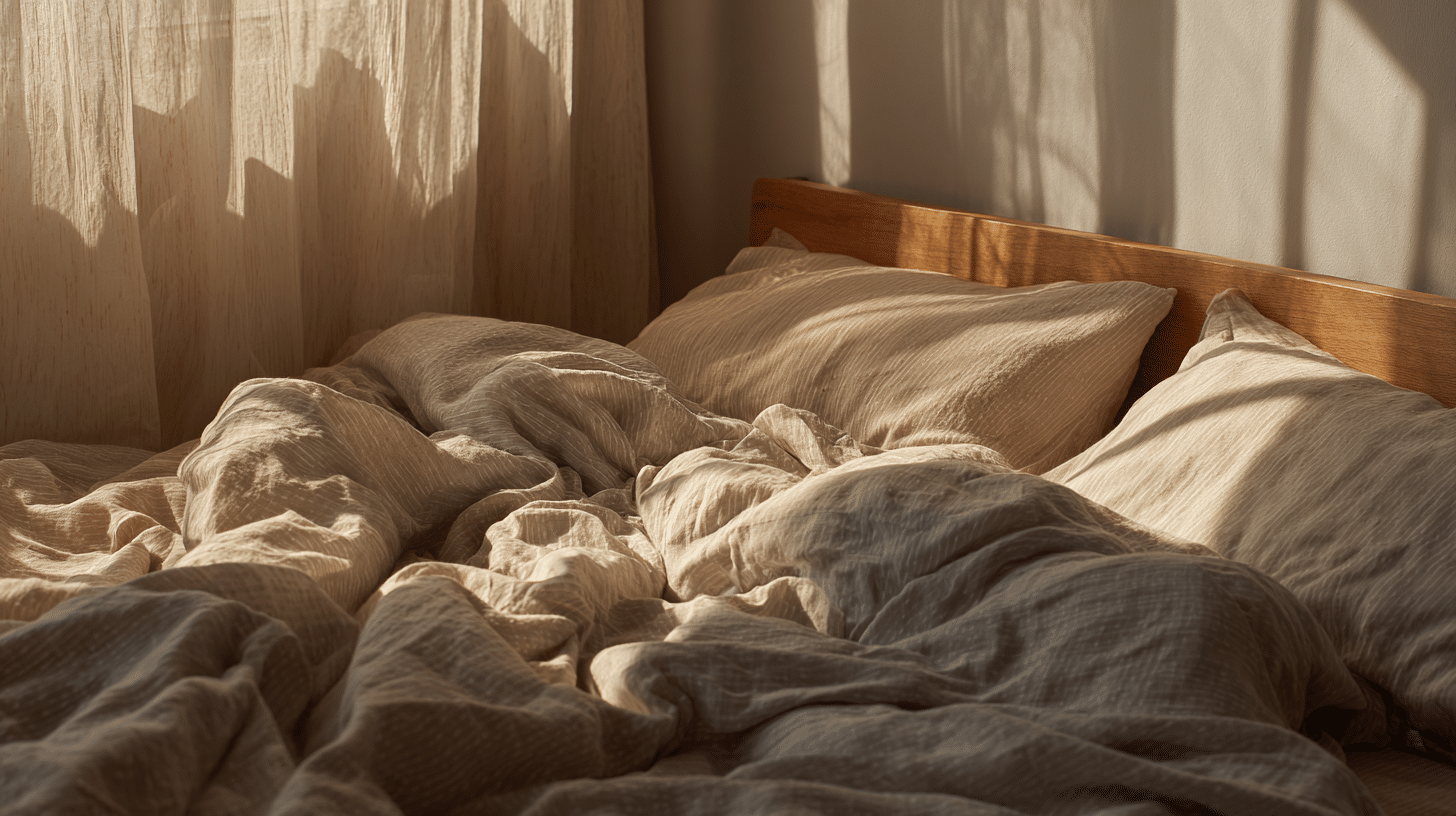
Choose unwashed linen sheets in cream, gray, or soft brown colors. Let them wrinkle naturally instead of ironing them smooth.
The rumpled texture adds a sense of calm and comfort. Linen gets softer with each wash and ages beautifully.
2. Add a Reclaimed Wood Headboard
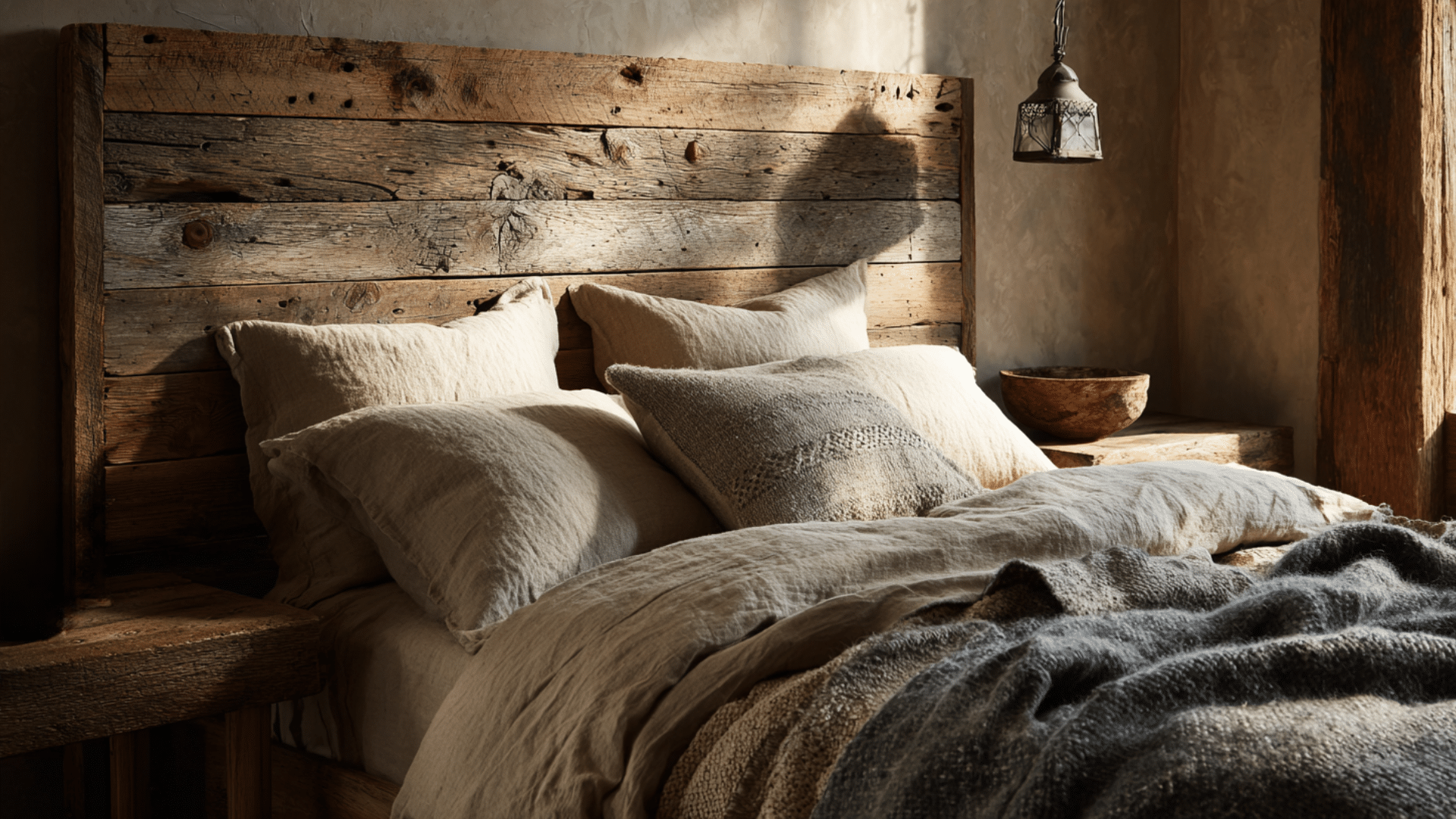
Install a headboard made from old barn wood or salvaged timber. Each piece will have unique grain patterns, knots, and weathering.
The aged wood brings character that new furniture can’t match. You can leave it unfinished or apply a light natural oil to protect it.
3. Keep Nightstands Simple and Asymmetrical
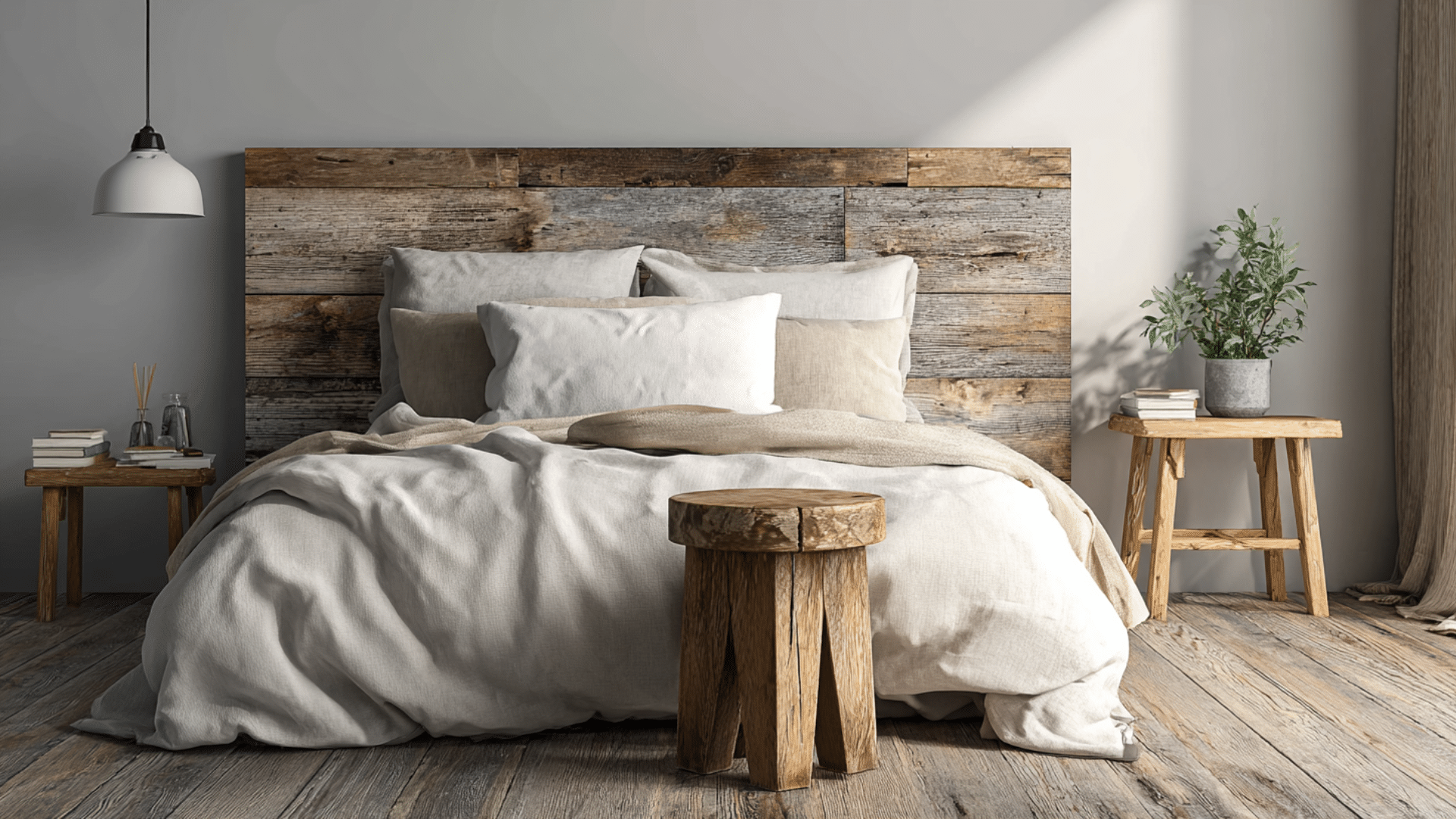
Place a mismatched nightstand on the side of your bed. One might be a vintage wooden stool, while the other is a simple one.
Keep surfaces mostly clear with just a lamp and maybe one small plant. This creates visual interest without clutter or forced matching.
Bathroom
The bathroom is a place for daily rituals and self-care. Small wabi sabi touches can make your routines feel more meaningful and grounded.
4. Install a Stone Vessel Sink
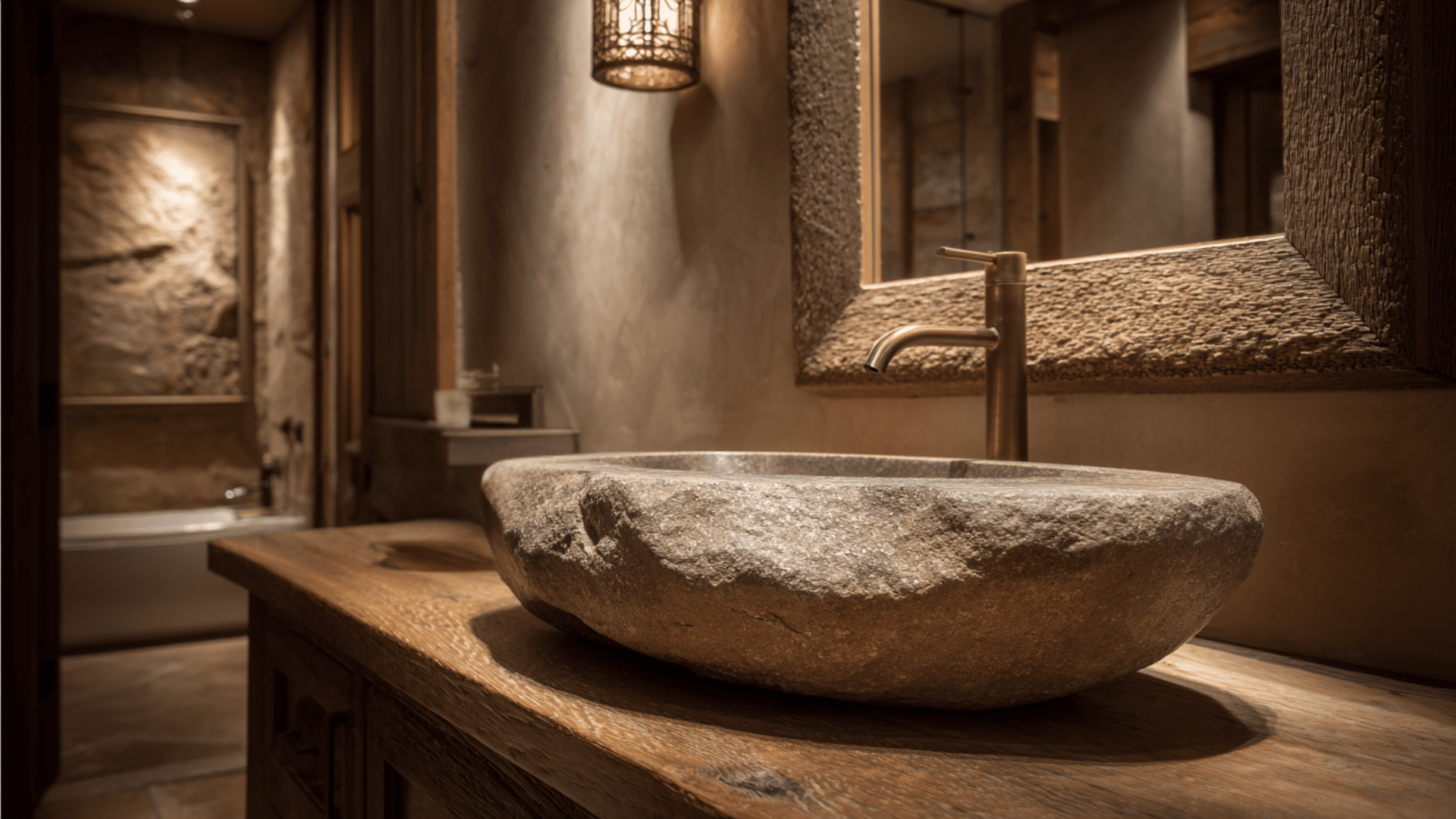
Select a sink crafted from natural stone, such as granite or river rock. Each one has its own unique patterns and color variations.
The organic shape and raw material feel grounding. Pair it with a simple wooden vanity for a contrasting look in the space.
5. Display Handmade Ceramic Soap Dishes
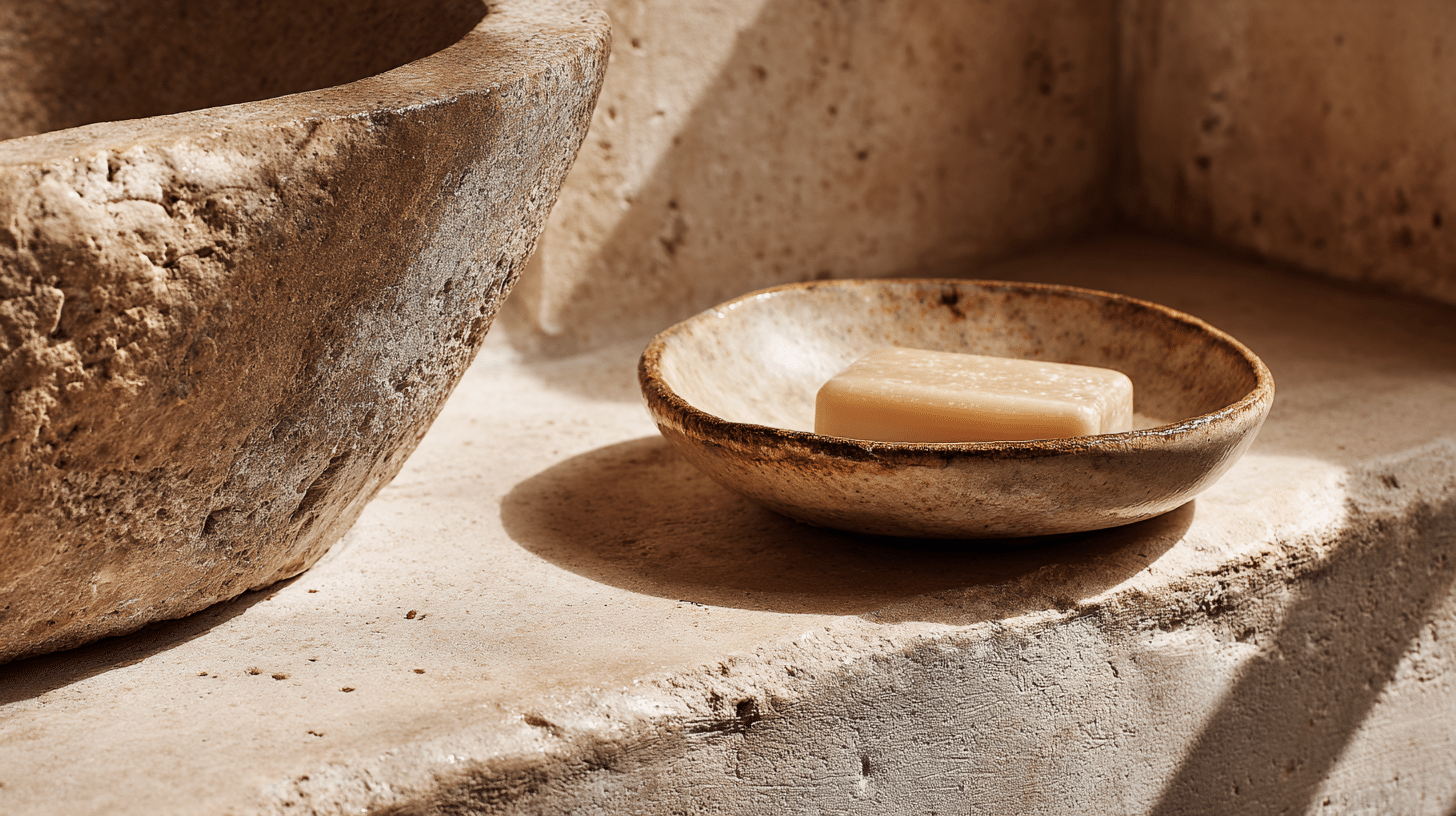
Use pottery pieces with irregular glazes and slight imperfections. Handmade ceramics show the maker’s touch through small variations.
Place them near your sink or tub to hold soap and small items. These functional pieces add beauty through their uniqueness and craftsmanship.
6. Add Natural Fiber Bath Mats
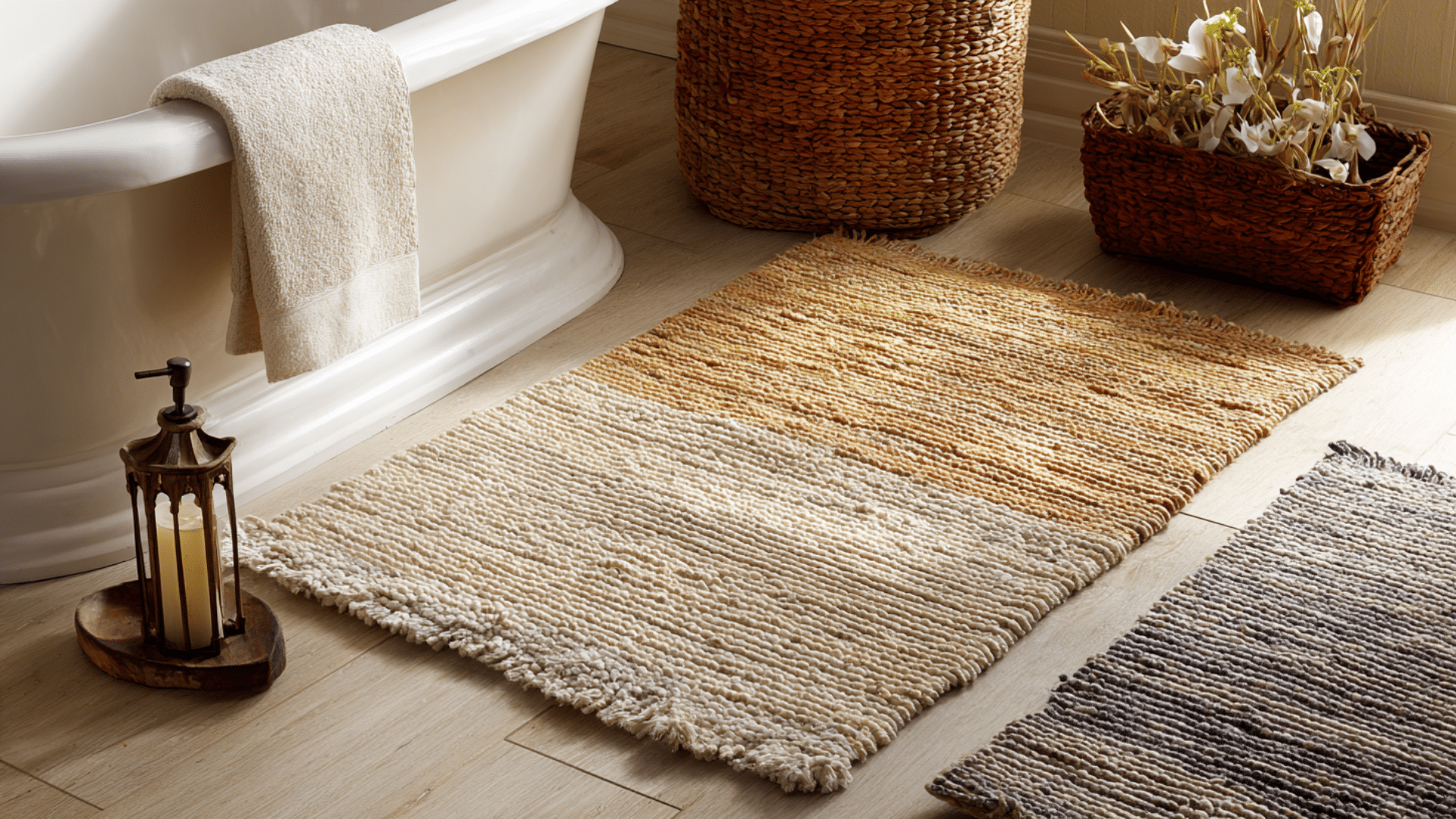
Choose bath mats made from cotton, jute, or bamboo in neutral shades. These materials absorb water well while adding organic texture to your floor.
Let them age naturally with slight fraying at the edges. The worn look adds to their charm and shows they’re well-used and loved.
Kitchen
Your kitchen is the heart of your home, where meals and memories happen. Wabi sabi interior design principles make this workspace feel cozy and more inviting.
7. Choose Open Wooden Shelving
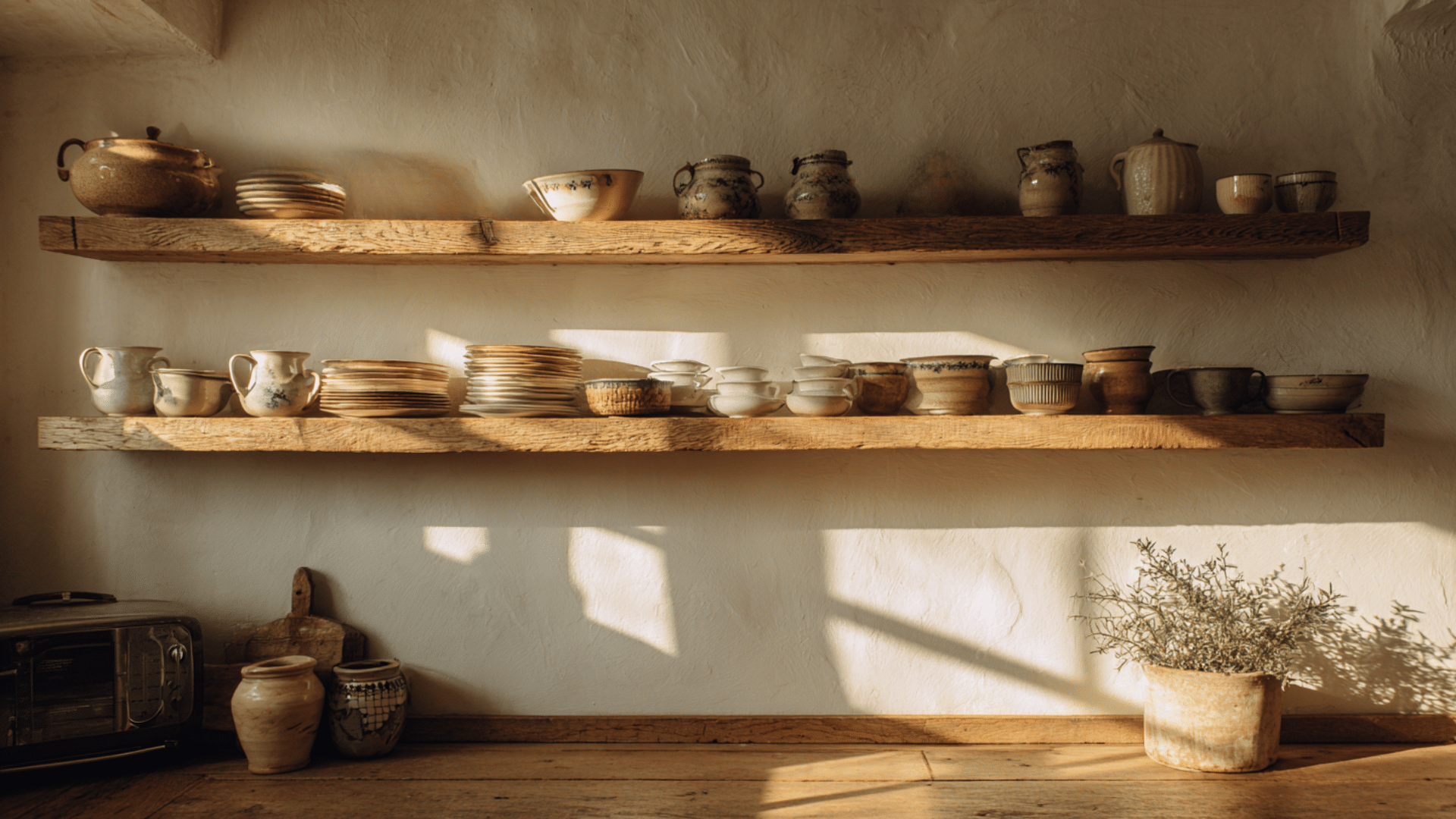
Replace upper cabinets with simple wood shelves in their natural finish. Display everyday dishes, bowls, and cups in a visible location.
This makes your kitchen feel more open and honest. The wood will develop a patina from use, improving its appeal.
8. Use Handmade Pottery for Everyday Dishes
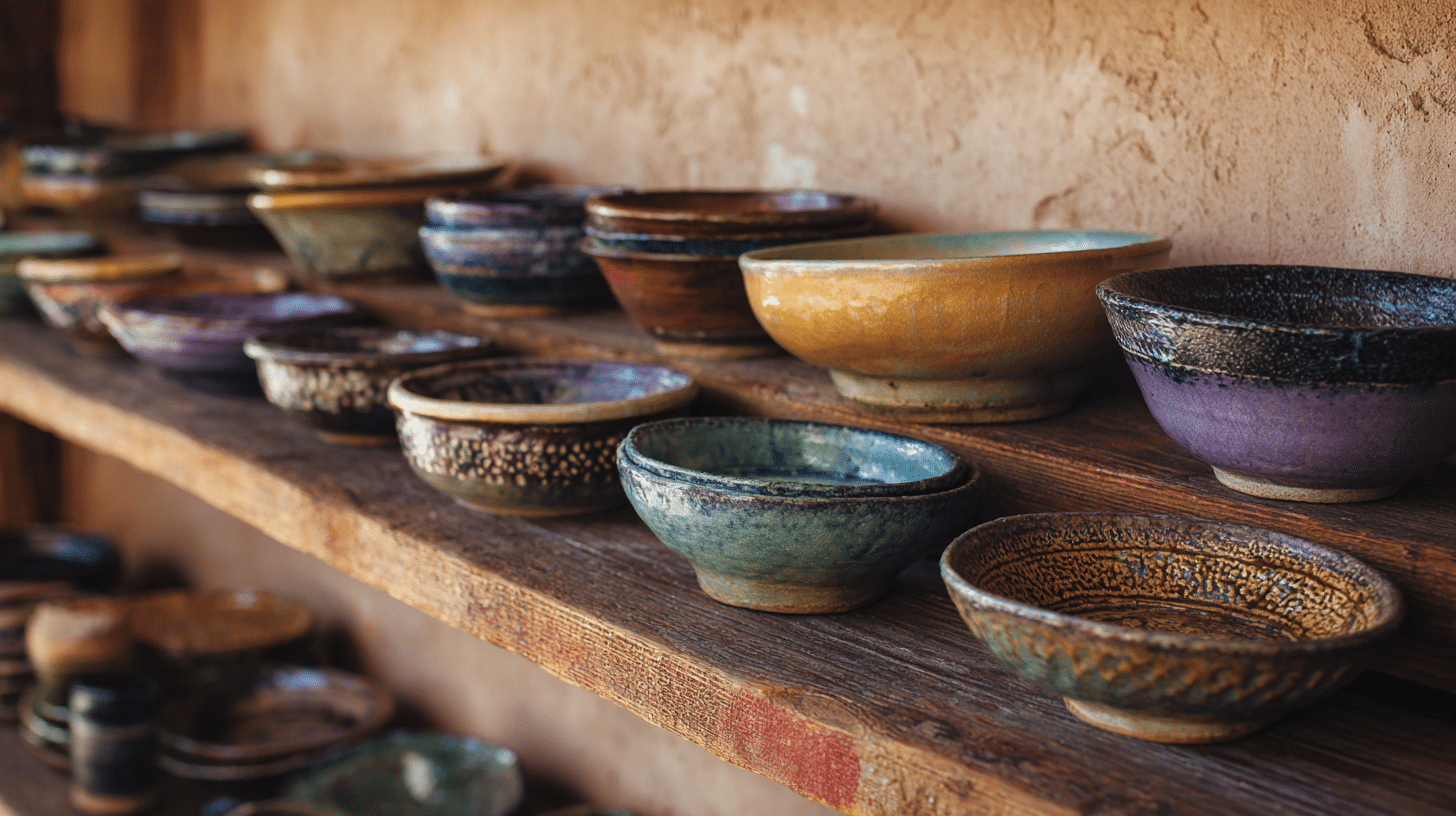
Stock your shelves with ceramic pieces that have slight variations in shape and glaze. Each bowl and plate will be a bit different.
Eating from handmade items makes daily meals feel more special. The imperfections remind you that each piece was crafted by real hands.
9. Add a Worn Wooden Cutting Board
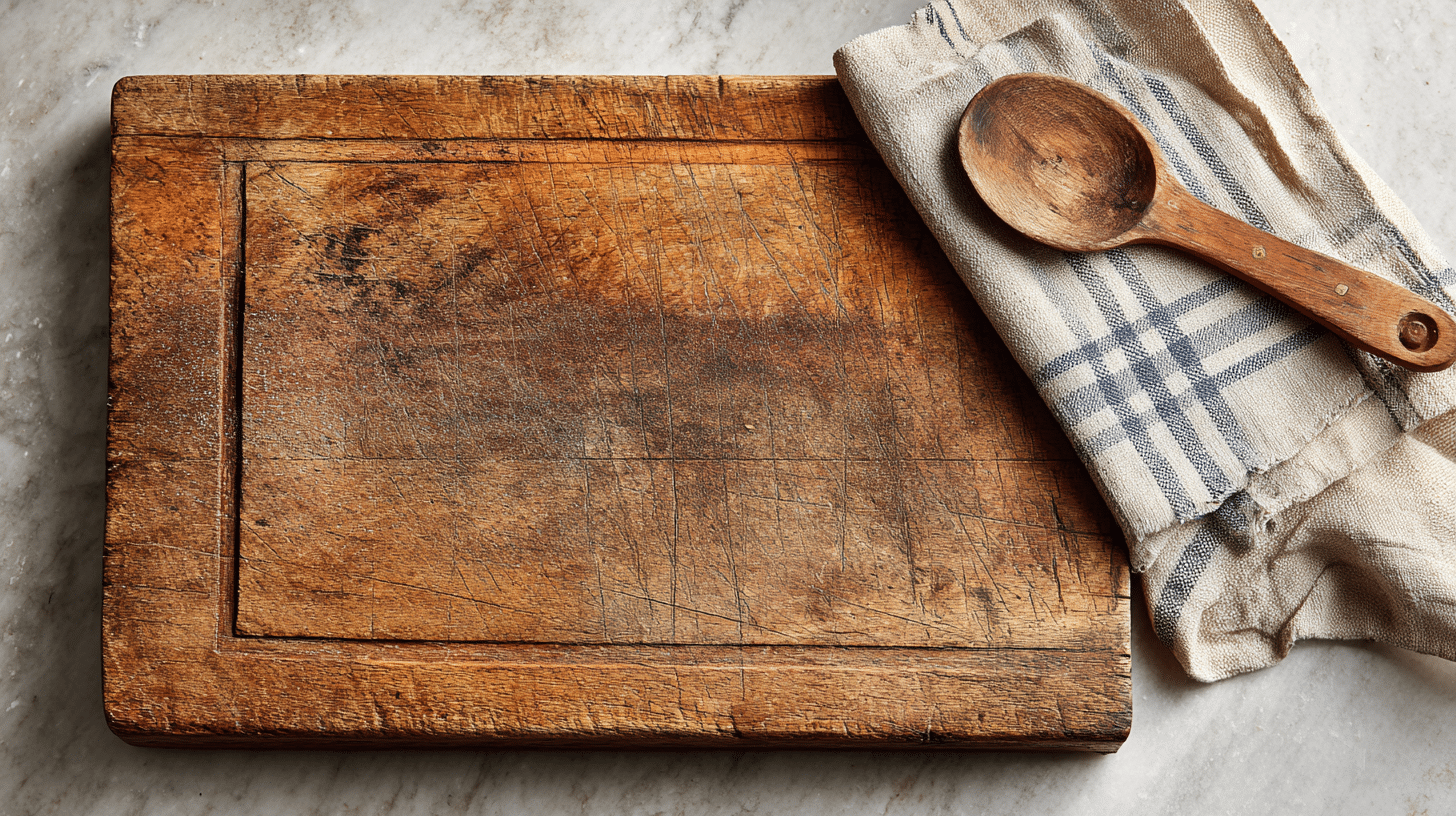
Keep a large, well-used cutting board on your counter as both a functional tool and a decorative accent. Knife marks and stains tell the story of countless meals prepared.
The aged wood adds a cozy feel to your workspace. It’s beautiful because it’s genuinely useful, not just for show.
Living Room
This is where you spend most of your waking hours at home. These Wabi Sabi ideas will help you create a space that truly feels like your own.
10. Arrange Mismatched Vintage Furniture
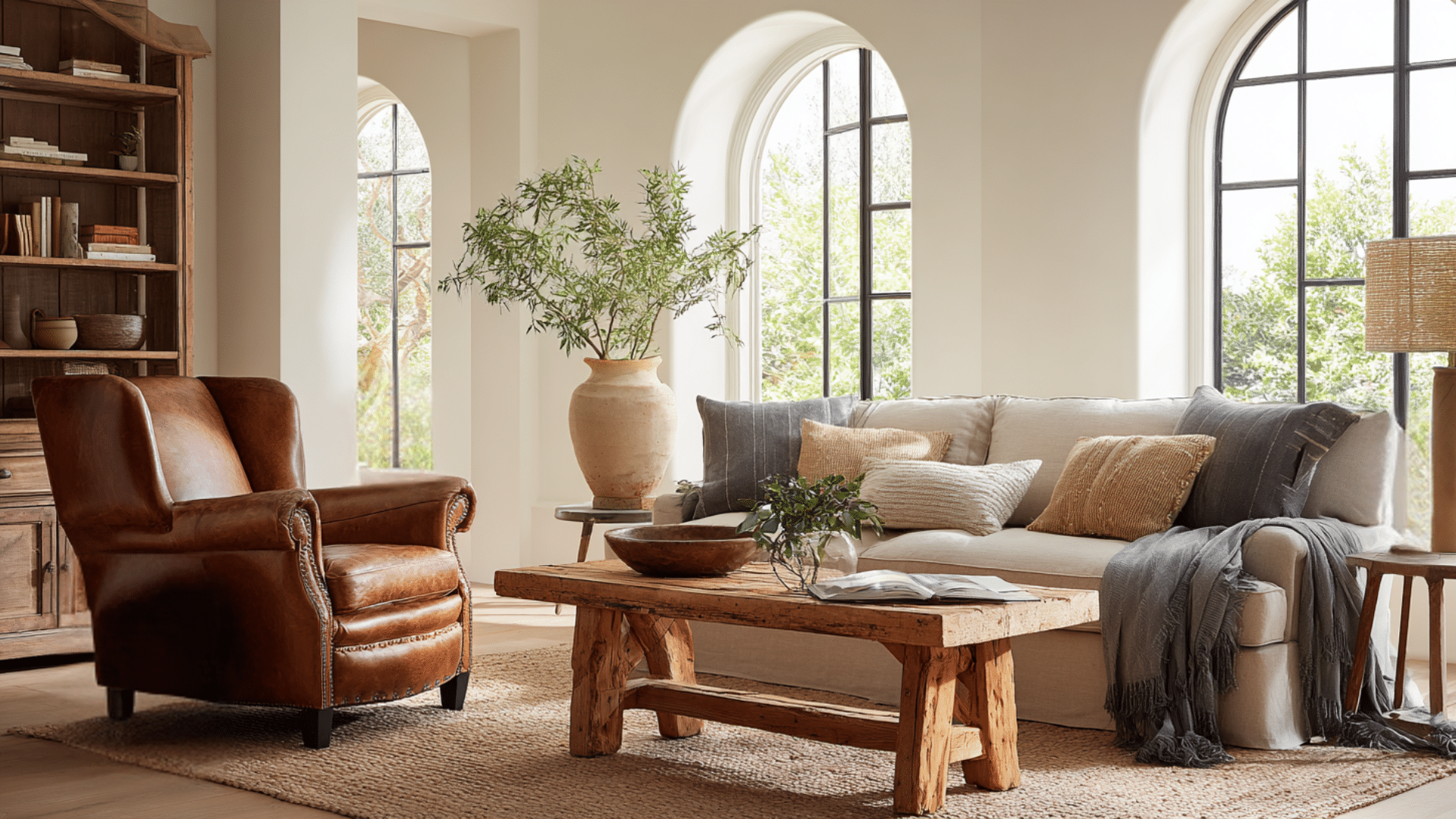
Mix a leather chair with a linen sofa and a wooden side table. Different eras and materials create depth and interest.
Each piece should feel comfortable and inviting. This approach feels collected over time rather than bought all at once from one store.
11. Layer Natural Fiber Rugs
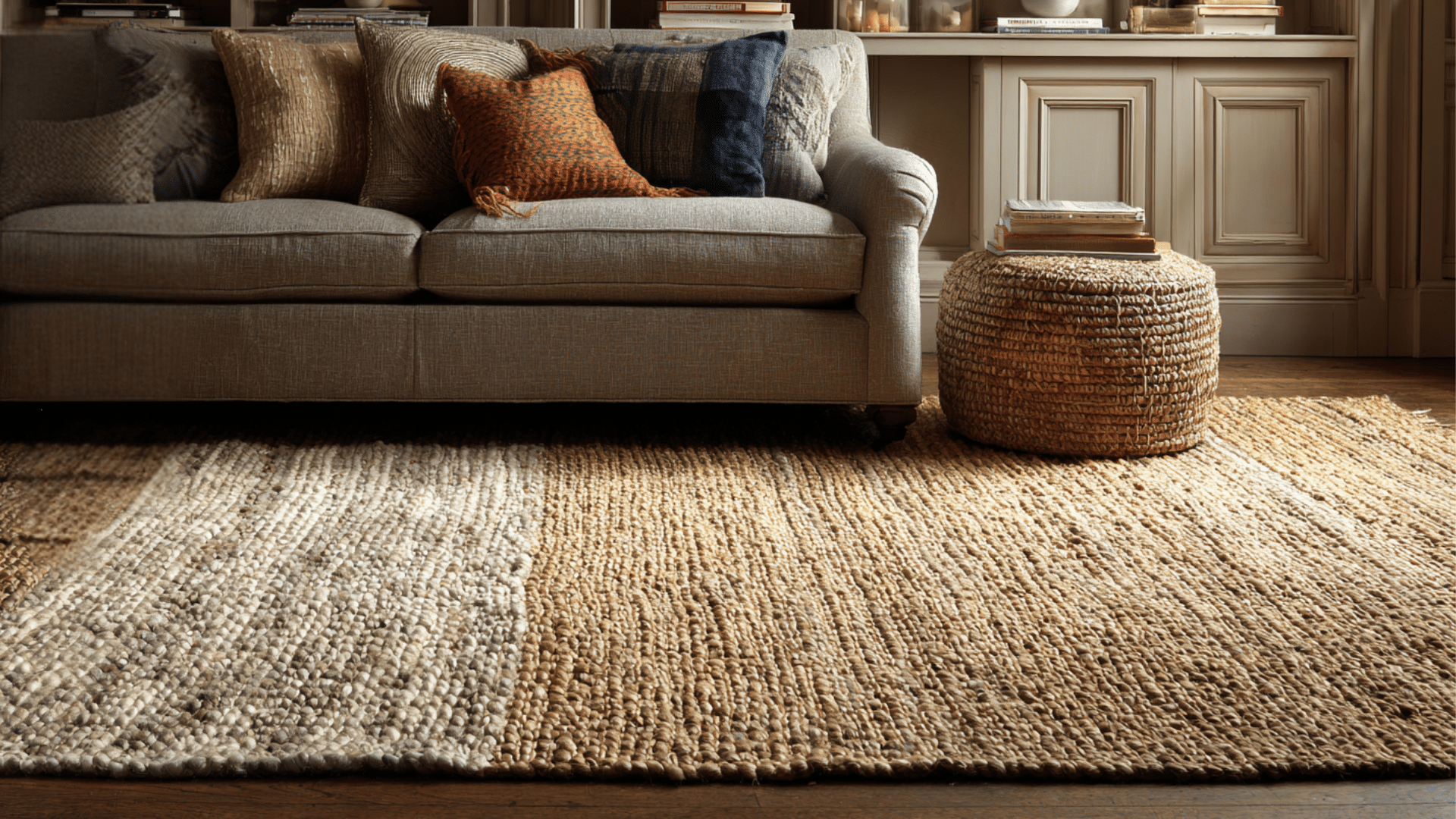
Place jute, sisal, or wool rugs in muted tones on your floor. Let edges fray slightly and don’t worry about perfect placement.
Natural fibers age well, revealing their texture. They ground your space and connect it to organic materials found in nature.
12. Display Found Objects on Simple Surfaces
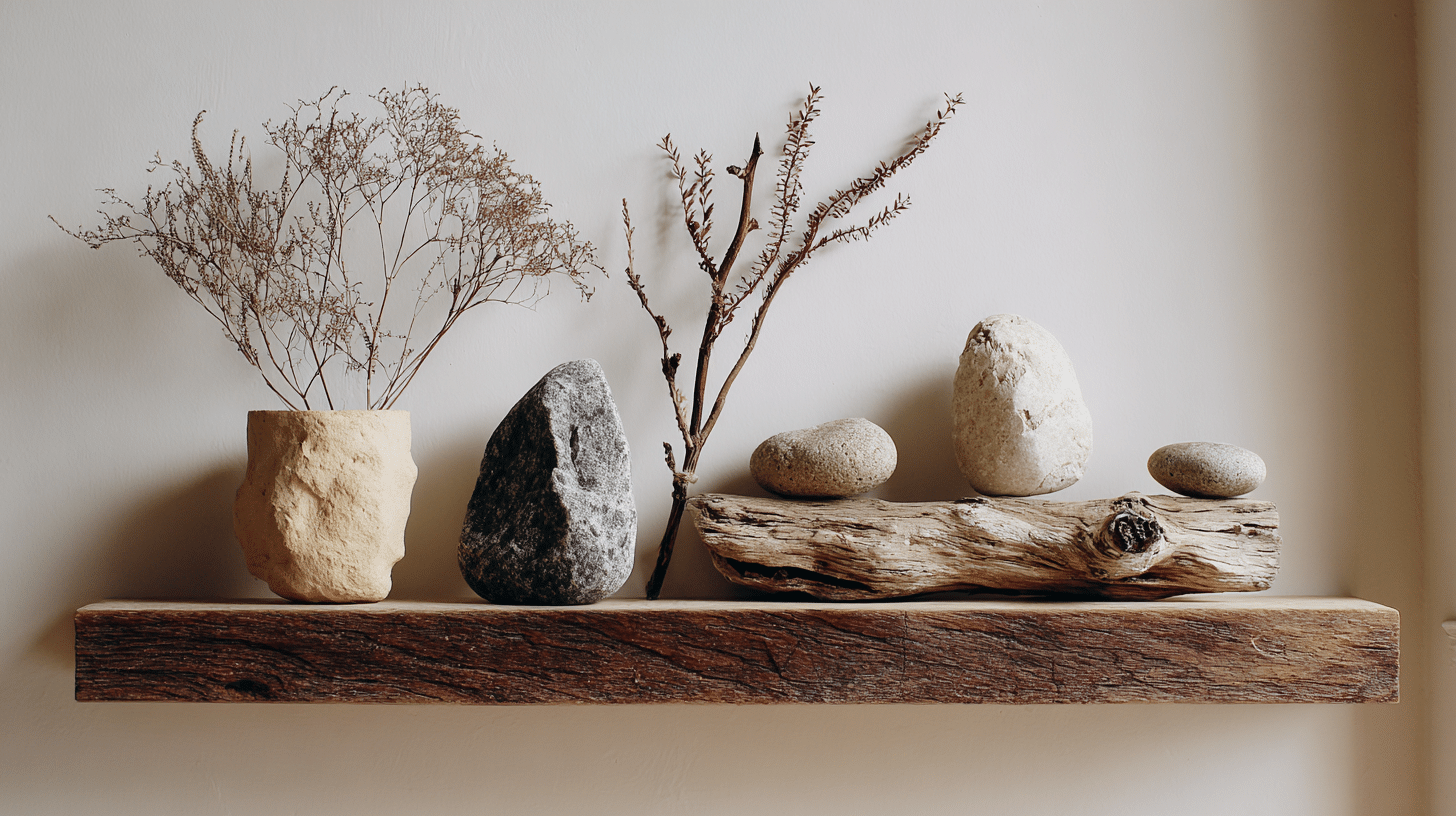
Arrange stones, driftwood, or dried branches on a plain wooden shelf. These natural items bring the outdoors inside.
Keep displays sparse so each object can be appreciated. Rotate items seasonally as you find new pieces that catch your eye during walks.
Dining Room
Meals bring people together, and your dining room sets the tone for a great experience. These simple touches will make every gathering feel more special and real.
13. Use a Solid Wood Table with Character
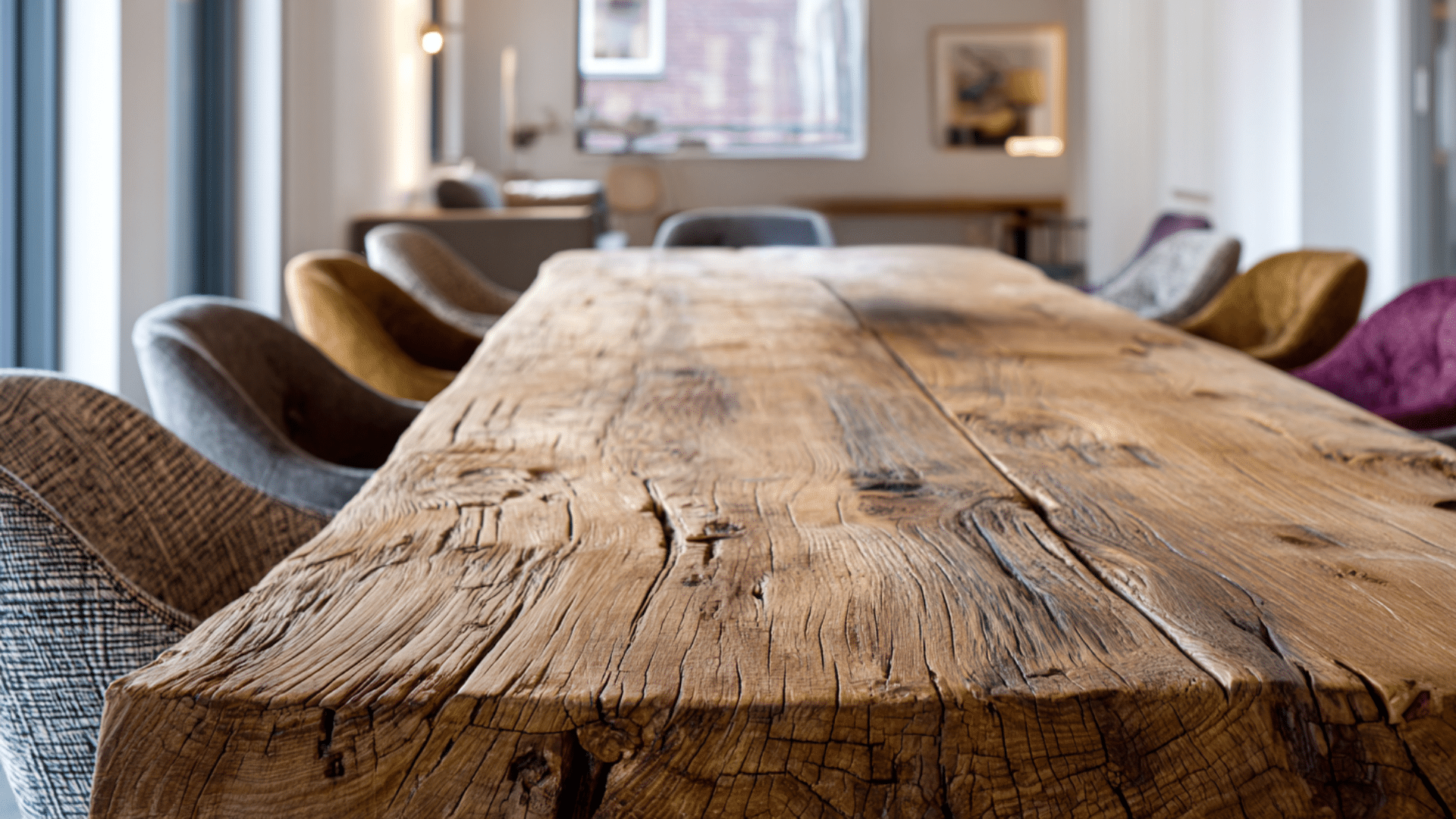
Select a dining table crafted from a single wood slab, featuring visible knots and grain. Let it show scratches and marks from family meals over time.
The imperfect surface becomes more beautiful as it ages. This table will be the heart of your dining space for years.
14. Mix Different Chair Styles
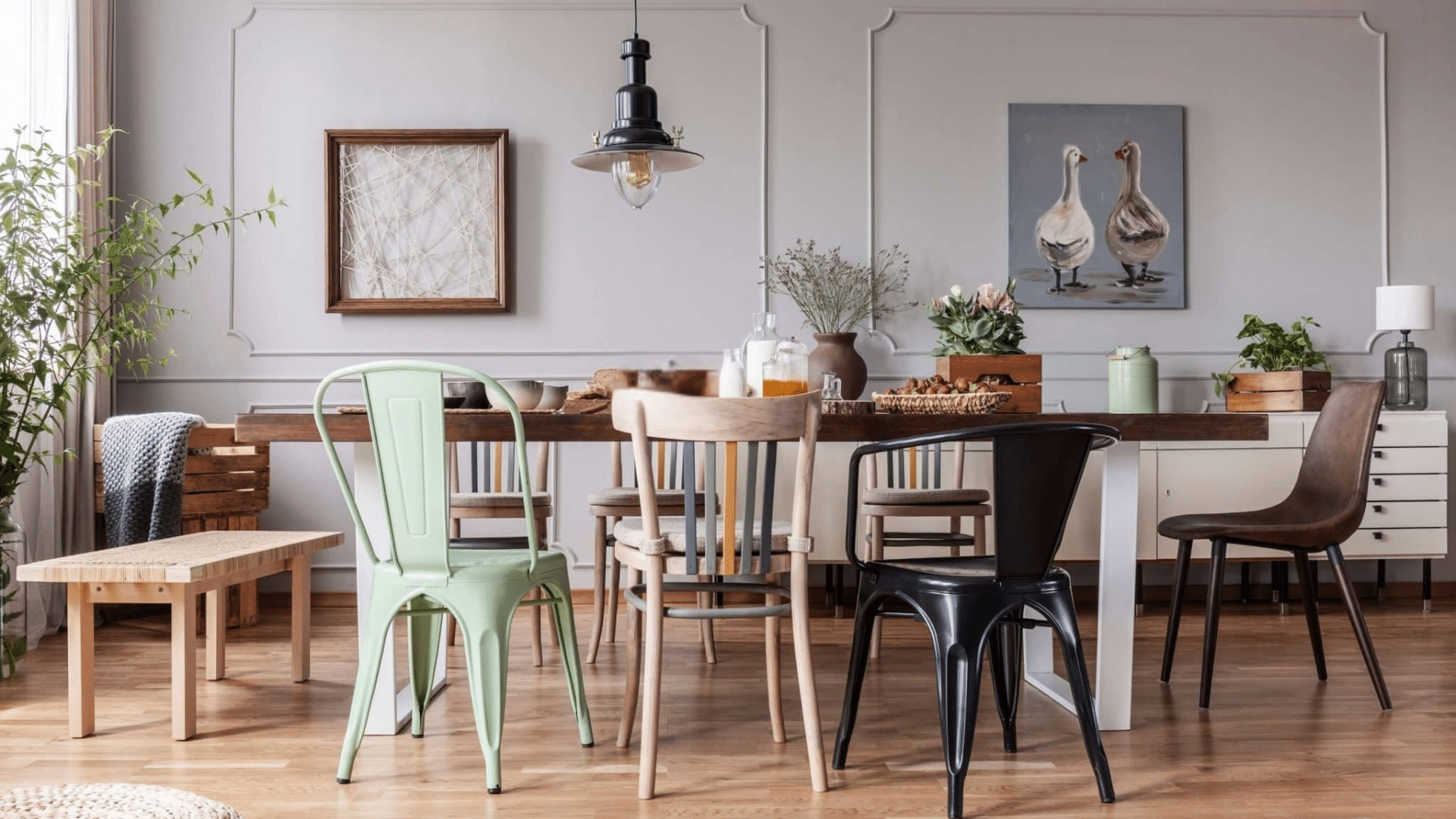
Surround your table with chairs that don’t match perfectly. Combine wood finishes, heights, and designs that complement each other.
This creates a relaxed, collected feeling. Your dining area will appear as if it evolved naturally, rather than being purchased as a matching set.
15. Light with Simple Paper Lanterns
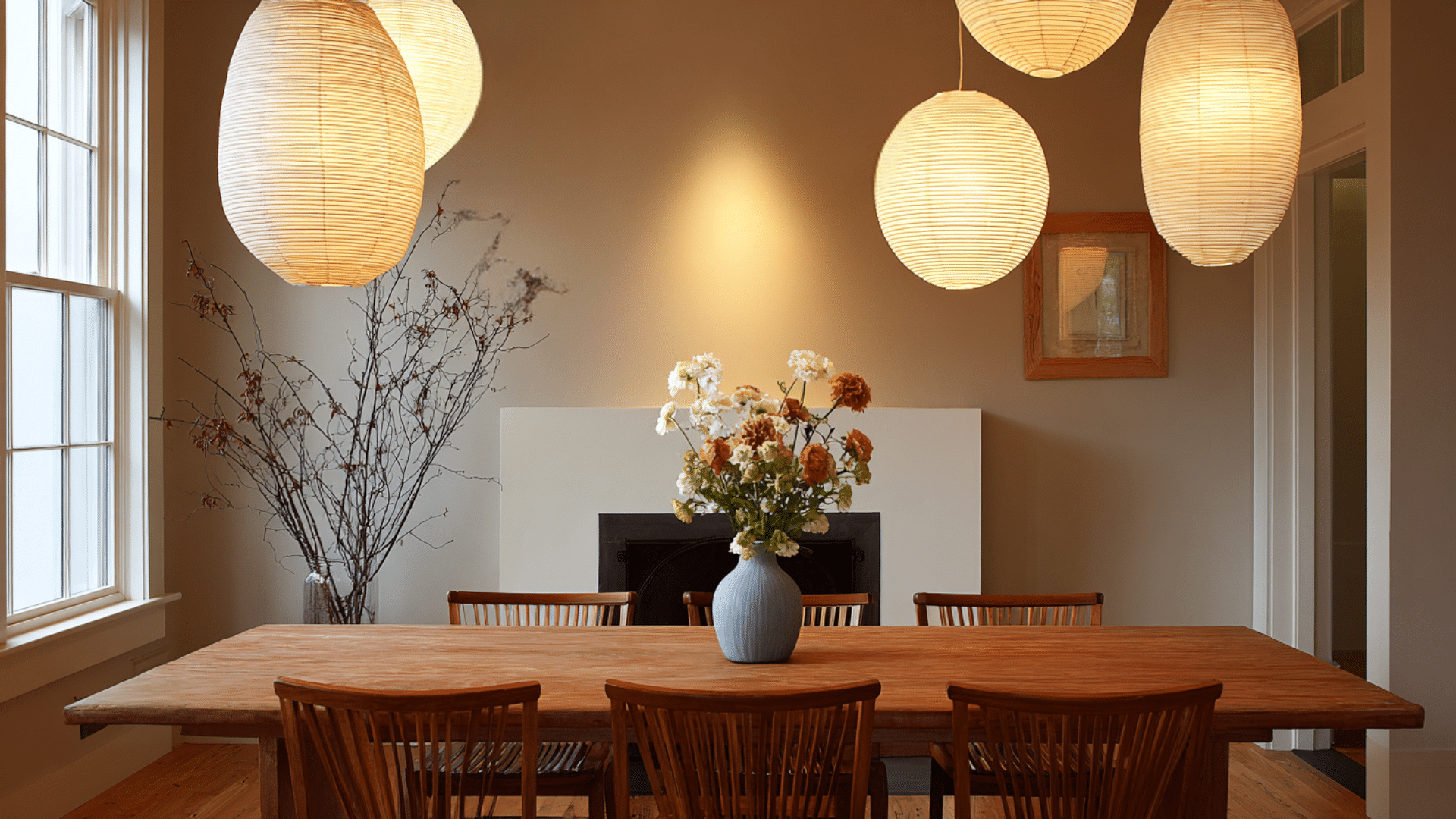
Hang rice paper pendants or woven bamboo shades above your table. Soft, diffused light creates a calm atmosphere for meals.
Natural materials cast gentle shadow tones. These fixtures age gracefully and can be easily replaced when they become too worn.
Wabi Sabi vs Other Styles
Knowing how wabi sabi differs from other popular design styles will help you determine what works best for your home.
| Design Style | Key Focus | Color Palette | Materials | Perfection Level | Best For |
|---|---|---|---|---|---|
| Wabi Sabi | Imperfection and natural aging | Neutral, earthy, muted tones | plain wood, stone, clay, linen | take up flaws and wear | Those who value simplicity |
| Modern | Clean lines and function | White, black, gray | Metal, glass, smooth surfaces | Seeks perfection through reduction | People who want order and clarity |
| Scandinavian | Coziness and light | White with soft pastels | Light wood, wool, cotton | Polished but comfortable | Those seeking bright spaces |
| Industrial | Urban and raw | Gray, black, brown, plain | Metal, concrete, exposed brick | Intentionally unfinished | Fans of urban loft look |
| Bohemian | Color and pattern | Rich, vibrant, mixed hues | Textiles, wicker, mixed materials | Layered and eclectic | Creative spirits who love color |
| Farmhouse | plain and cozy | White, cream, soft colors | Painted wood, shiplap, vintage items | Clean country charm | Those wanting rural comfort |
Why Wabi Sabi Interior Design Improves Living Spaces
Wabi sabi makes your home feel more comfortable and less stressful.
You stop worrying about keeping everything perfect and pristine. The style encourages you to appreciate what you already own rather than constantly buying new things.
Your space becomes more personal and real because it reflects real life, not magazine photos.
They connect you to nature through organic materials.
Most importantly, this approach helps you find peace in simplicity and accept that change is natural and beautiful.
Mistakes to Avoid
- Buying too many new items at once instead of letting your space develop slowly over time
- Trying to make everything look perfectly imperfect, which defeats the whole purpose
- Using artificial materials that mimic natural ones rather than choosing real wood, stone, or clay
- Cluttering your space with too many objects when wabi sabi values simplicity
- Forcing a specific color scheme instead of letting natural, muted tones emerge organically
- Ignoring comfort and function while chasing a certain look
- Throwing away perfectly good items just because they show signs of wear
- Mixing wabi sabi with too many other design styles creates confusion instead of calm
Conclusion
Wabi sabi interior design isn’t about buying new things or following strict rules. It’s about shifting how you see your home and the objects in it.
Let go of the pressure to keep everything looking brand new and perfect.
The scratches on your table and the faded cushions all have meaning. They show a life well lived.
Appreciate what you already have and watch your space turn into something more honest and comforting.
What will you change first in your home?

